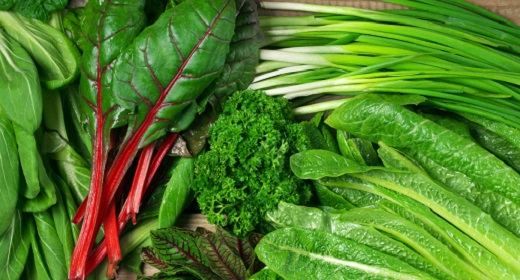by Ocean Robbins: Amid all the diet wars and conflicting claims, there’s one class of food that (almost) everyone agrees is a nutritional winner: leafy greens…
Beloved by vegans (“Fiber!”) and ketovores (“Low-carb!”), leafy greens give us a giant heap of nutrients in a very low-calorie package. Eating leafy greens is associated with a lower risk of cardiovascular disease, hypertension, type 2 diabetes, cancer, and dementia.
So, in theory, we’re all eating our leafy greens every day, and we live happily ever after. In practice, of course, that’s not what’s going on. Many people, especially those of us whose childhood greens were limited to iceberg lettuce and canned spinach, get overwhelmed by the challenges of keeping ourselves and our families in green-land.
In this article, your intrepid correspondent will tackle the toughest issues faced by people trying to increase their leafy green consumption. These include:
- Which kinds of leafy greens should I be eating?
- What should I look for when shopping for them?
- How do I wash and dry them to remove dirt, pesticides, and bacteria?
- How do I store them to prevent spoilage and wilting?
- How do I prepare them, so they taste good and actually get eaten, instead of winding up in the garbage disposal, compost bucket, or trash?
- Which ones should I eat raw, and which ones should I cook?
- And what can I do with them besides make a salad?
In just a few minutes, you’ll be ready to ace the Leafy Greens segment next time you’re a contestant on Jeopardy!
What are Leafy Greens?
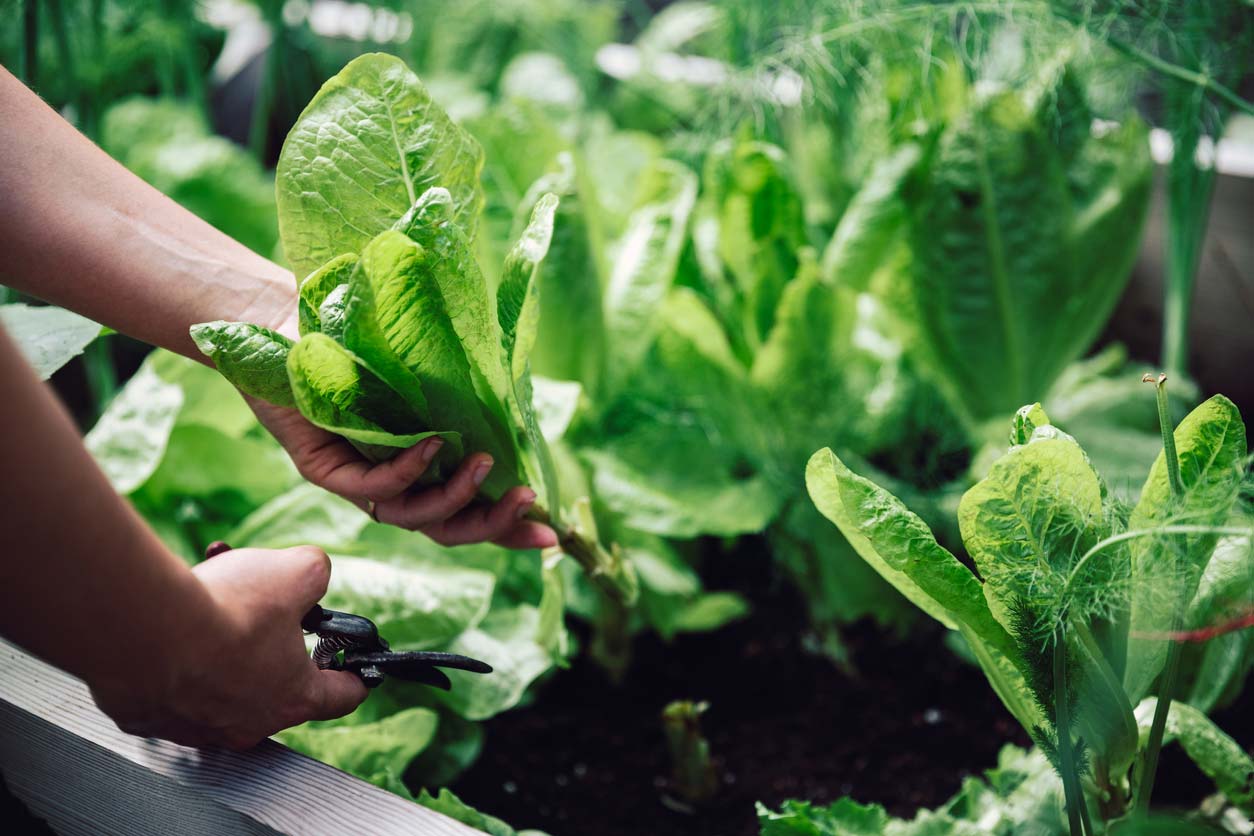
A leaf is a flat, thin plant organ responsible for photosynthesis (a technical term for a frankly underappreciated magic trick through which plants convert sunlight into chemical energy). A leafy green, for our purposes, is any such leaf that humans find edible. This is important, as not all plant leaves are edible. Potato leaves, for example, are chock full of solanine, an alkaloid that will reward anyone who consumes it with symptoms ranging from nausea and vomiting to shortness of breath and death. And there’s a spirited debate online about whether eating young poison ivy leaves can inoculate you against rashes, or whether you’re just risking a nasty case of indigestion (or worse!) for nothing.
For this discussion, l want to focus on the perfectly edible leafy greens you can grow in your backyard or find at your local grocery store or farmers market. There are several types, including the leafy plants like lettuce and kale, in which everything above the roots is a leaf. There are also plants with edible leaves in addition to other edible parts; radishes and beets, for example.
As the name suggests, greens are typically green, although some varieties come in other colors, for example, purple kale and red chard. As with other plants, their color scheme tells us a lot about their nutritional profile. Regardless of individual differences, in general, leafy greens are high in antioxidants, vitamins, and minerals, as well as being a good source of fiber.
Types of Leafy Greens
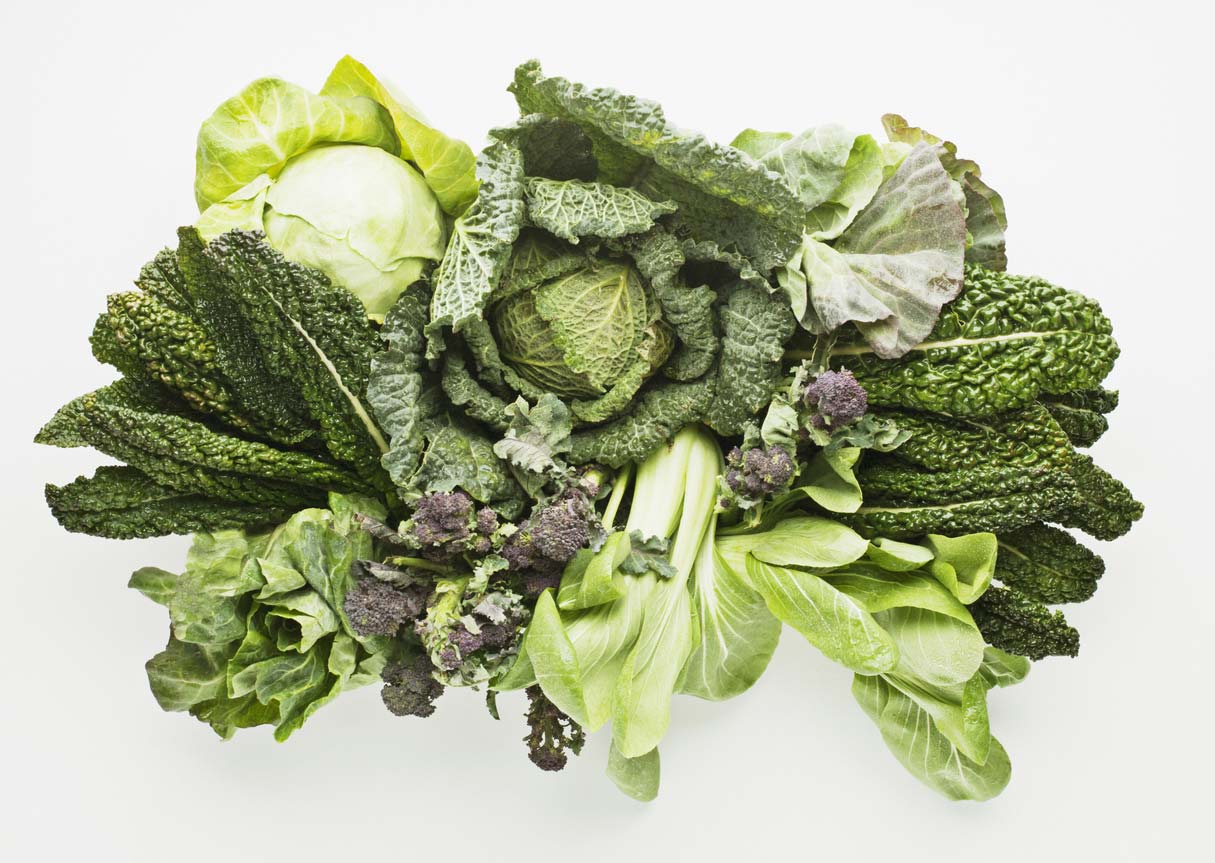
We can place each of the edible leafy greens into one of six categories, as follows:
Cruciferous Greens
These greens from the cruciferous, or brassica family of vegetables, are rich sources of amazing organosulfur compounds, including the breakout star, sulforaphane. Ongoing research suggests that sulforaphane is one of the most potent anticancer nutrients ever studied. Cruciferous greens include arugula, kale, bok choy, cabbage, collard greens, and more.
Taproot Greens
Certain root vegetables come with a wonderful nutritional bonus: their leafy tops. These include radish greens, beet greens, carrot tops, celeriac greens, and turnip greens, among many others.
Lettuce Greens
The lettuce family is perhaps the one we most associate with uncooked leafy greens. In the last couple of decades, westerners have discovered many varieties other than iceberg and romaine, including butterhead, red leaf, green leaf, Bibb, Boston, and oak.
Chicory Family Greens
This family consists of lettuce’s artsy and temperamental cousins, both heartier and more bitter than most lettuce varieties. Actually, part of the dandelion branch of the sunflower family, the most commonly consumed chicory greens include endive (which you can pronounce “enn-dive” or “on-deev,” depending on whether you want to sound downhome or fancy), and frisee, which you pronounce “free-zay,” and never “frisbee.”
Amaranth Family Greens
Amaranth is a popular perennial plant, varieties of which are grown either for their pseudocereal grains, ornamentally for their brightly-colored, catkin-like flowers, and for their green leaves. Greens from plants in the amaranth family include amaranth greens, spinach, and Swiss chard.
Herb Greens
When you think about it, the main difference between a spicy lettuce and a mild parsley, culinarily speaking, is volume. Lettuce fills our plate, while parsley garnishes it. But all those green herbs are leafy greens and pack some of the most powerful nutritional profiles into their intensely flavored leaves. In addition to parsley, some of the most common include basil, oregano, cilantro, thyme, and rosemary.
Washing & Storing Leafy Greens

The thing about plants is that, mostly, they grow in dirt. If you buy greens that aren’t pre-washed, you’ll probably want to wash them to remove dirt and even little bugs (who enjoy greens as much as we do). And some greens are contaminated with invisible pesticide residues as well. Spinach and kale are two of the Environmental Working Group’s “Dirty Dozen” — plants that should be organically sourced, if at all possible. Even organically certified produce can contain pesticides, whether from neighboring farms or because certain “less problematic” pesticides are certified organic. So it’s a good practice to wash all fresh greens prior to eating them.
While plain water will remove dirt and some pesticides, you’ll want a more powerful cleanser to completely remove pesticide residue. Scientists have tested various produce cleaners, and discovered that the most effective method for cleaning leafy greens is a baking soda solution. For more info, check out our article on how to wash produce.
And while many of us spent the spring of 2020 downloading Zoom backgrounds, Amelia Rampe of TheKitchn.com tested several methods of washing and drying greens to find the most effective, energy-efficient, and convenient technique. She found that the ice bath method removed the least grit (and was, perhaps unsurprisingly, unpleasantly cold). Filling the entire sink with water and immersing the greens was wasteful of water. The winner: Filling a salad spinner with water (or a baking soda solution) and greens, letting them sit for a bit, then pouring off the water, rinsing, and spinning dry.
Of all the drying methods (wringing out in a towel, air drying on a baking pan, shaking violently while dancing the Hula, or using a salad spinner), the spinner removed the most water the quickest. Here’s a popular stainless steel salad spinner.
How to Choose and Store Leafy Greens

When buying leafy greens, look for fresh, firm leaves and bright colors. Avoid greens that look wilted or have yellow or brown spots. They should also pass the “sniff test,” and either not smell at all, or give off an aroma like the plant’s characteristic taste. For example, arugula’s sharp scent is redolent (that’s a fun word, isn’t it?!) of pepper.
Store greens in the refrigerator, unwashed, and rinse and dry them just before using. You can keep them wrapped in produce bags (like these reusable mesh bags), with all the air burped out, or store them in an airtight container. Most do well in the fridge’s crisper drawer. Hardy leaves like kale and collards will last longer than lettuces or bok choy, but why wait? Try to eat leafy greens within a couple of days, so you never have to look down on a sad, slimy plastic bag full of organic matter decomposing behind the oat milk and tub of hummus.
Cabbages, on the other hand, last a really long time in the fridge. You may be able to store a head in the crisper drawer for up to several weeks. Store any unused chunks in an airtight container to prevent decay.
How to Prepare Leafy Greens
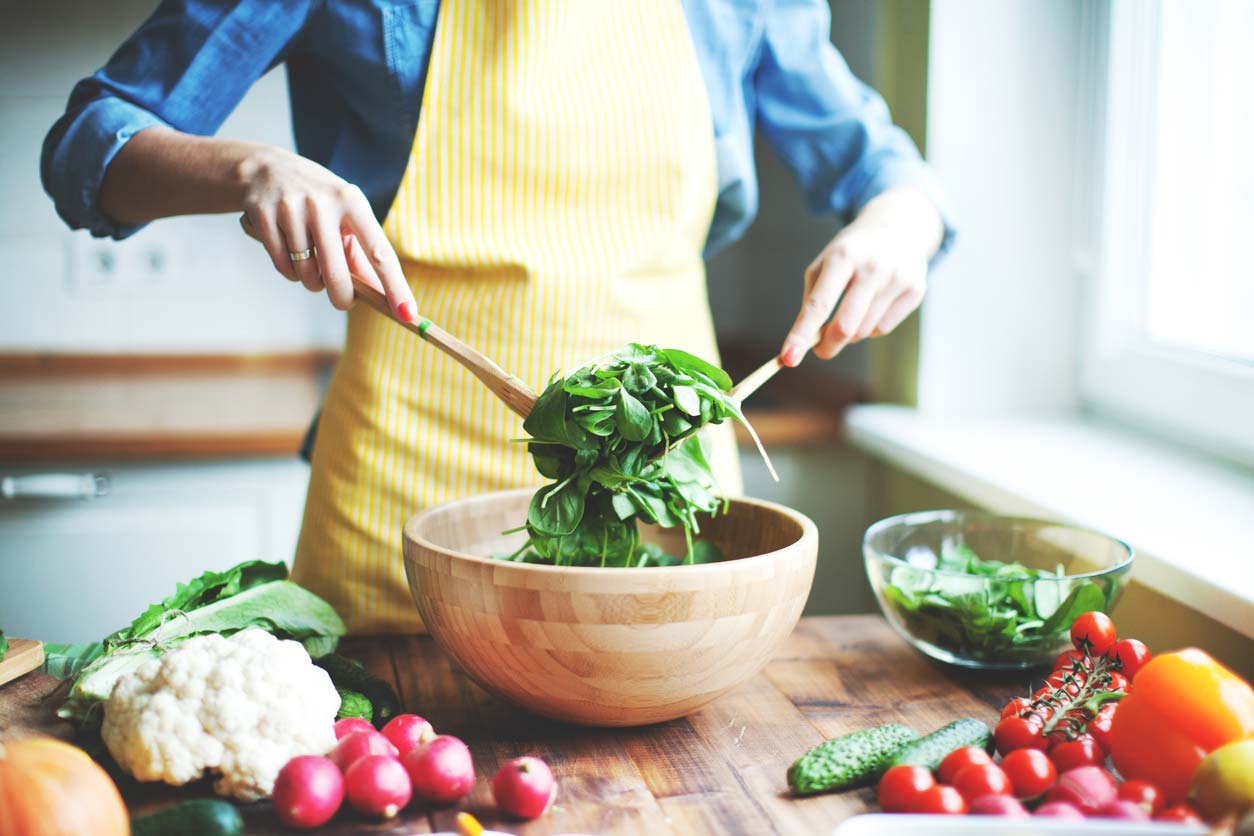
You can serve leafy greens raw, cooked, or fermented. Each way has its own nutritional benefits and taste profiles, so you may need to experiment to find out your favorite ways to prepare them.
Raw Greens
The most popular raw greens include lettuces, cabbages (shredded, in slaw), and sharp salad greens like arugula and mizuna. Serve them in salads, add them to sandwiches, or as toppings on main dishes and grains. You can tenderize stemmed and chopped collards and kale by massaging the leaves with avocado before tossing with other salad ingredients. Arugula also makes a delicious, peppery pesto. Because collard greens hold together well, they make an excellent wrap material if you want to avoid processed wraps made with flour.
Green Smoothies
One easy way to consume lots of raw greens like kale, spinach, and arugula — and even herbs like parsley, cilantro, and lovage — is to blend them into green smoothies. You can use fresh or frozen greens for smoothies. The trick to great smoothies is to add just enough fruit to make it sweet (and if you’re feeding kids or picky eaters, to mask the taste of the greens).
Chips
You can also make kale chips, which might be considered raw by purists, depending on how you dehydrate them. Wash, de-rib, and massage the kale with some seasonings, and dry away! You can use a dedicated dehydrator, or just warm them on baking trays in the oven for a couple of hours.
Dips
Raw greens like spinach and kale also make great dip ingredients. You can add them to a food processor or blender when making hummus and non-dairy “cheeze” spreads.
Cooked Greens
You can also cook your greens. Asian greens, along with all the cabbages, work well in stews, soups, and stir-fries.
Boiling or Steaming
You can also boil or steam your greens. If you aren’t going to use the water you cooked them in, steaming is better than boiling because more nutrients remain in the greens instead of leaching out into the water. Steamed greens may seem bland, but they can be a wonderful part of a macrobiotic-inspired plate, served with a grain, some legumes, tofu or tempeh, and covered in a piquant ginger sauce. The best time to boil greens is if you’re going to make them into soup, which enables you to drink the nutrients that end up in the water.
Baking, Roasting, or Grilling
Because head cabbages hold together well even after you slice them, they work well when cut into pieces of equal size and then baked, roasted, or grilled. The longer they cook, the sweeter and more tender they become.
Stir-Frying
Stir-frying can be a tasty way to prepare greens that even picky eaters will enjoy, and it can be healthy, too, as long as you don’t smother your veggies in overheated oil. The healthiest way to stir-fry greens (and other veggies, for that matter) is to omit the oil entirely. To stir-fry oil-free, you can use water, broth, soy sauce, or liquid soy or coconut aminos to keep the veggies from sticking to the pan and burning. Stir constantly (as Martin Yan, the chef on Yan Can Cook reminds us, “It’s stir-fry, not stare-fry!”), and don’t overheat the pan. A pro trick is to cook some onions first in a dry pan, and add liquid just when they start to caramelize and brown. The sugars from the onion will make for a rich, flavorful sauce even before you add a “real” sauce to the leafy greens dish.
Fermented Greens
Another great way to enjoy greens is to ferment them. You can make sauerkraut and kimchi from head cabbages, as well as leafy brassicas like bok choy and napa cabbage. For our article on the stunning health benefits of fermented foods, click here.
5 Delectable Leafy Green Recipes
Here are some unusual and elegant recipes to get you started down the path to delicious and nutritious leafy green cuisine.
1. Roasted Fig and Walnut Arugula Salad with Wheat Berries
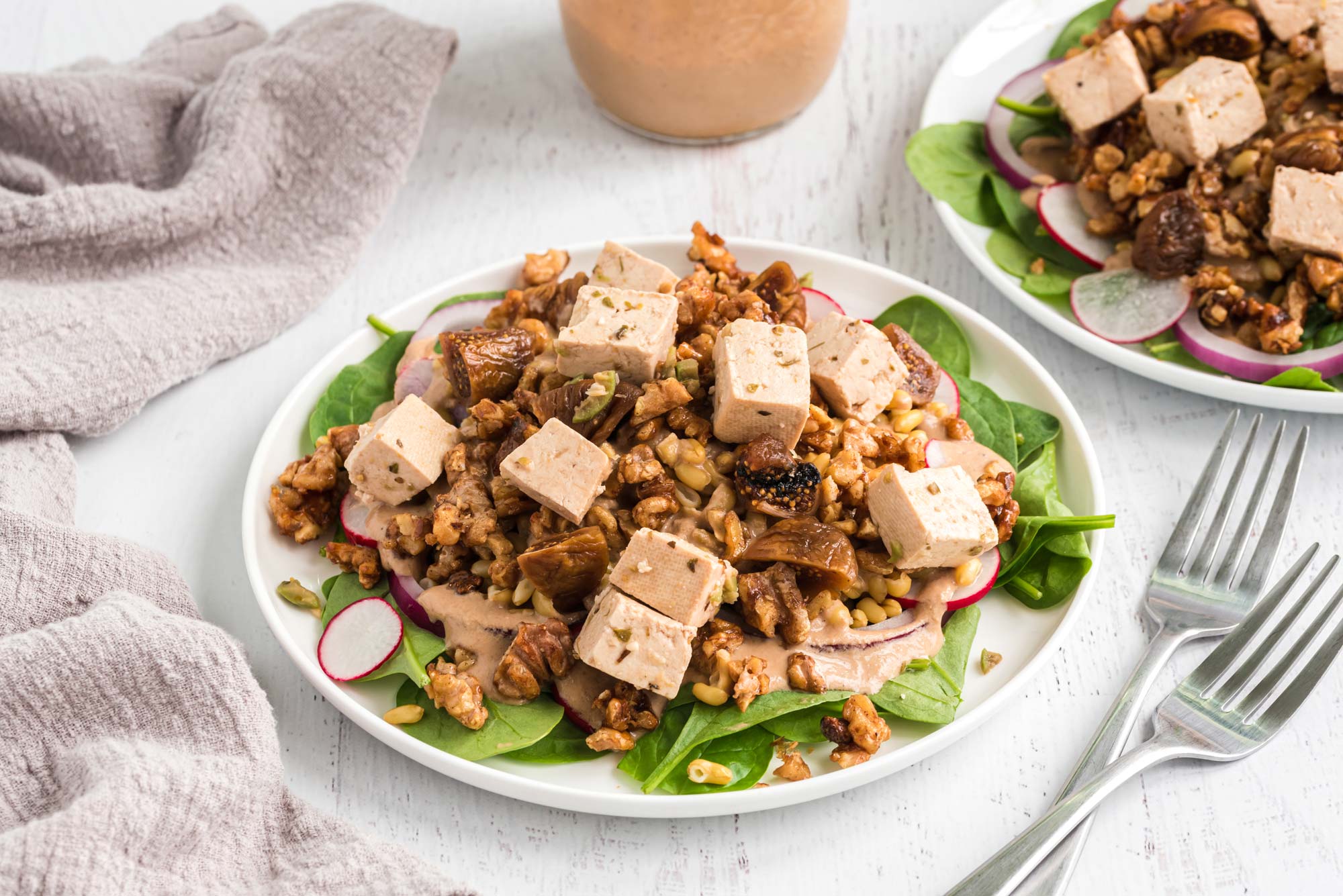
Spicy arugula paired with earthy radish, sweet figs, crunchy walnuts, and a tangy dressing makes for a perfectly balanced salad, both in flavor and nutrition. If you’re a fan of arugula, get ready to experience it in a delightful new way. If you’re not a fan of arugula (or not yet, anyway!), then this is an opportunity to try this peppery green as part of a flavorful, texture-rich, and nourishing meal.
2. Miso Shiitake and Bok Choy Soup with Noodles

If you’re struggling to include leafy greens in your diet, then look no further than this yummy noodle bowl. This restaurant-worthy dish is easy to make in the comfort of your own home. And it’s a great way to incorporate the nutrient powerhouse bok choy, which is chock-full of calcium, vitamin C, and beta-carotene. Cooler still is that you can add even more leafy greens in the form of herbs of your choice (we recommend chives, cilantro, or parsley)!
3. Spinach-Cashew Pizza Cheese Spread

Need a sneaky way to boost your kids’ (or your own) leafy greens intake? Make a tasty spread out of them! This spread is not unlike a pesto, but with a little more punch, so it can hold its own on a pizza crust along with bold toppings. Or you can use it as a dip or spread for other snacks and meals. With each bite, feel good knowing you’re getting in a healthy dose of leafy greens!
4. Lemony Braised Kale and Tomatoes
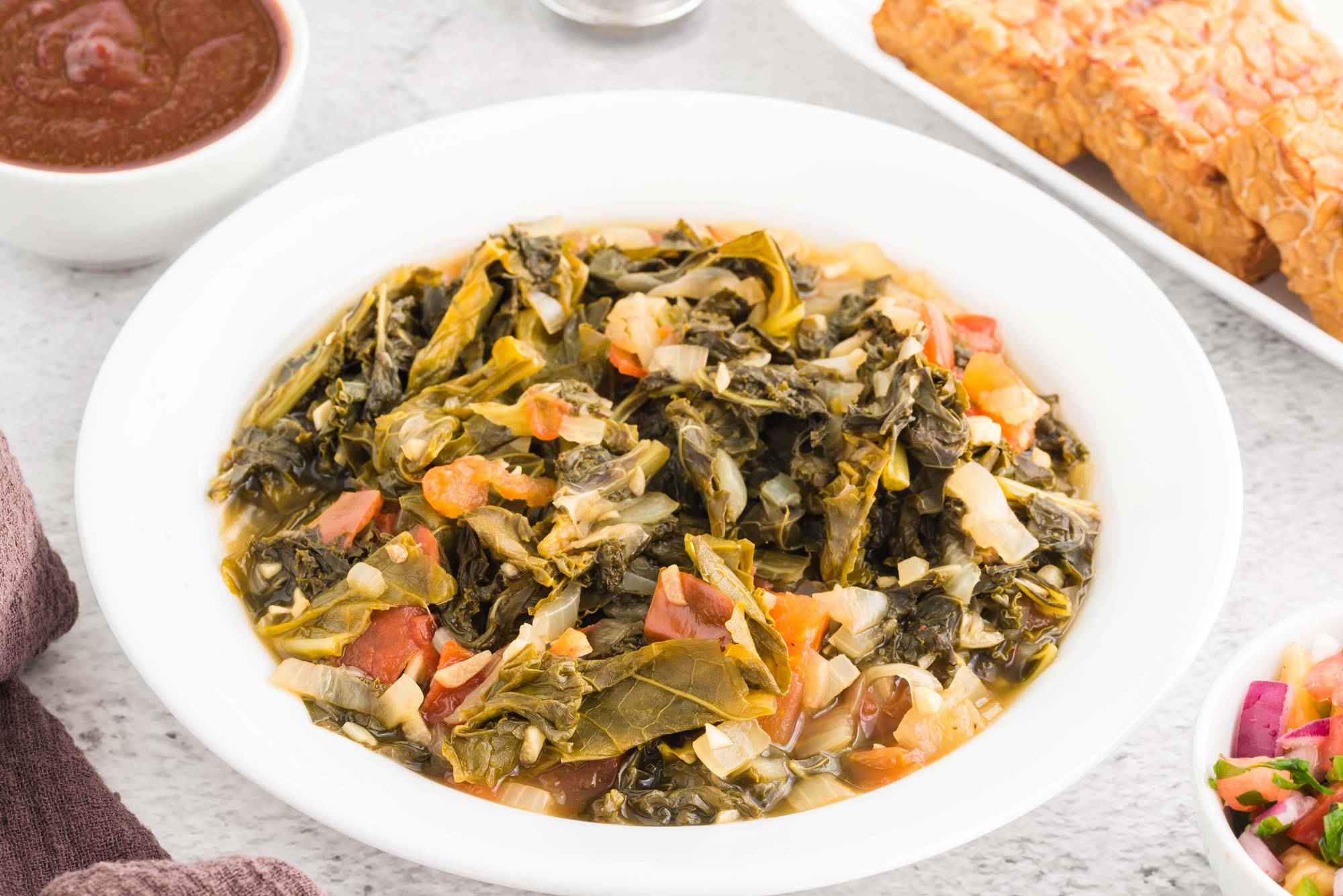
The bitterness that is sometimes found in kale is decreased when it’s braised, while the addition of lemon brings out a slightly sweet flavor. Combine this with the umami flavor of tomatoes, and you have yourself a lovely side of kale to enjoy alongside grilled tofu or tempeh and your favorite whole grain.
5. Green Goddess Dressing

Cilantro gives this dressing its pretty green color as well as its nutrient power (hello vitamin C, vitamin K, and beta-carotene!). Don’t love cilantro? No problem! You can swap it with basil or parsley, or half of each, and still get tons of nutrition and flavor. Tahini gives this dressing a creamy base; lemon gives it a bright lift; and whichever leafy herb you choose brings its own unique character and flavor. Use it as a salad dressing, on top of a grain bowl, or as a sauce for grilled tofu or tempeh. Pour the Green Goddess Dressing on top of just about everything to elevate any dish to the next level.
Get Your Greens In!
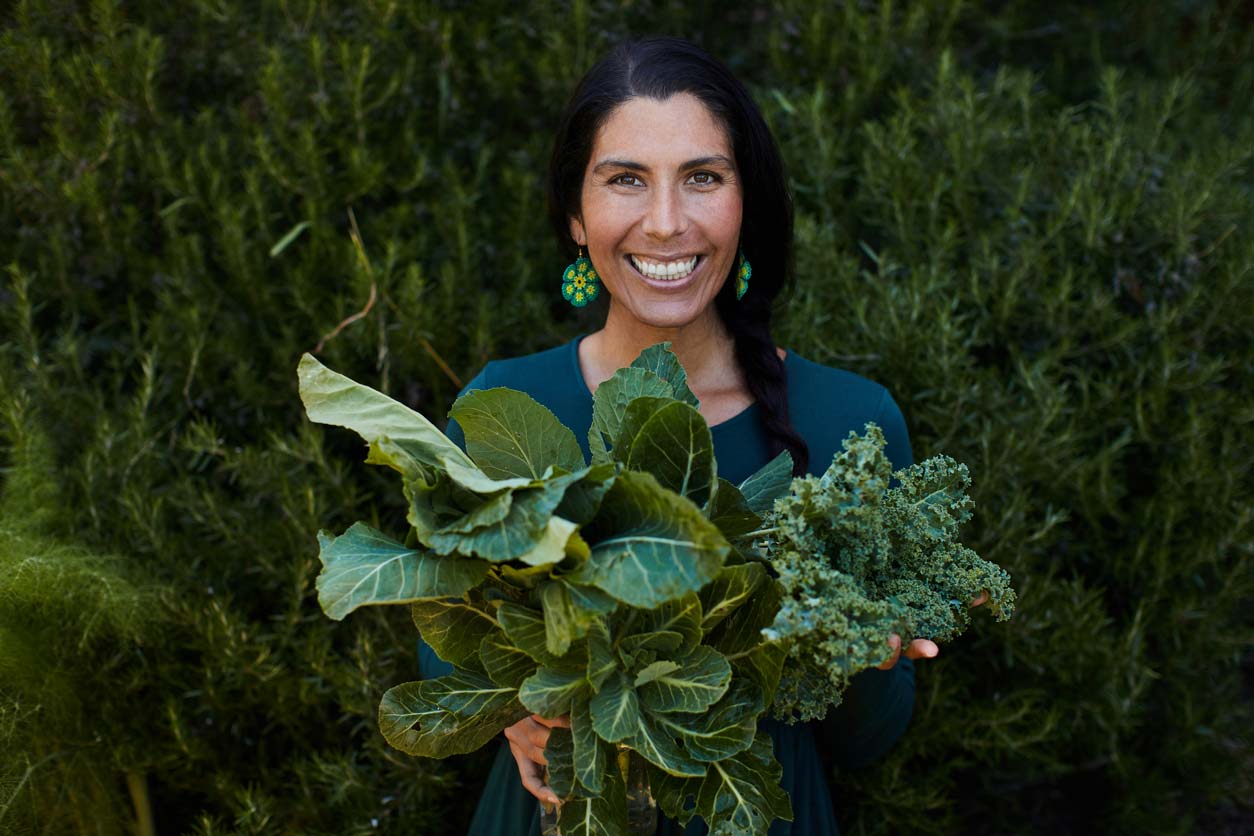
Leafy greens are, pound for pound and calorie for calorie, pretty well the healthiest foods around. Even if you grew up with iceberg salads and canned spinach as your only exposure, it’s never too late to get to know the variety and versatility of these most excellent plants. With so many to choose from, there’s no need to ever get bored with leafy greens. And now that you know how to choose, store, and prepare them, it’s time to go green in your kitchen!
FROM THE EDITOR OF AWAKEN.COM –
We are proud to announce a new partnership with Food Revolution to bring our readers Summits, Seminars and Masterclasses on health, nutrition and Earth-Conscious living.







